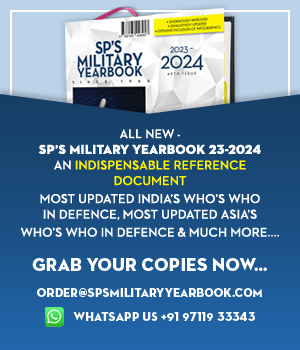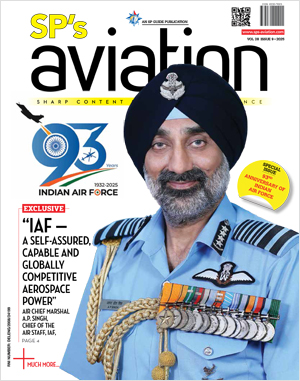INDIAN ARMED FORCES CHIEFS ON OUR RELENTLESS AND FOCUSED PUBLISHING EFFORTS
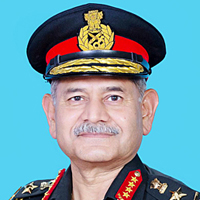
The insightful articles, inspiring narrations and analytical perspectives presented by the Editorial Team, establish an alluring connect with the reader. My compliments and best wishes to SP Guide Publications.
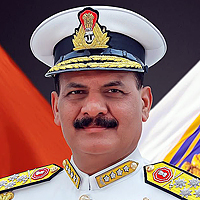
"Over the past 60 years, the growth of SP Guide Publications has mirrored the rising stature of Indian Navy. Its well-researched and informative magazines on Defence and Aerospace sector have served to shape an educated opinion of our military personnel, policy makers and the public alike. I wish SP's Publication team continued success, fair winds and following seas in all future endeavour!"

Since, its inception in 1964, SP Guide Publications has consistently demonstrated commitment to high-quality journalism in the aerospace and defence sectors, earning a well-deserved reputation as Asia's largest media house in this domain. I wish SP Guide Publications continued success in its pursuit of excellence.
NirmalJit Singh Sekhon (1943-71)
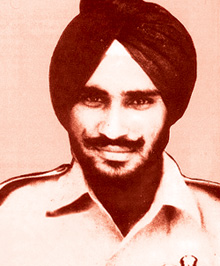
Sekhon lost his life fighting bravely and valiantly against heavy odds. He had managed to engage four enemy Sabres singlehandedly to the very end.
What makes a young and inexperienced fighter pilot engage in mortal combat against a number of adversaries without care for his own safety? Perhaps love for the country; perhaps pride in the profession of arms; perhaps a sense of honour. Whatever his reason, Flying Officer NirmalJit Singh Sekhon lived up to the trust placed in him during the 1971 War. In the process he won the Param Vir Chakra (PVC)—the supreme decoration of the Indian armed forces, awarded for the highest degree of valour or selfsacrifice in the face of the enemy. Since Independence, only 21 PVC awards have been made, 14 of these posthumously. And Sekhon remains the lone recipient from the Indian Air Force (IAF).
NirmalJit Singh Sekhon was born on July 17, 1943, at Issewal village, Ludhiana, Punjab. Being the son of Honorary Flight Lieutenant Tarlochan Singh Sekhon, the sights and sounds of combat aircraft must have been familiar to the boy from a tender age. He was commissioned in the IAF on June 4, 1967. Then, in 1971, war clouds began to gather over the subcontinent. Sekhon was one of a handful of junior pilots with No.18 Squadron – the “Flying Bullets”. The squadron was formed only on April 15, 1965, so was still a very young unit that had never seen combat as a fighting force.
In accordance with the 1948 agreement with Pakistan, air defence aircraft could not be based in Srinagar. However, the agreement lapsed with the onset of hostilities in December 1971. No. 18 Squadron, equipped with Folland Gnat fighter aircraft, was moved to the base. The detachment consisted of four Gnats, 17 officers and 72 airmen under Wing Commander P. Raina. The primary task assigned to the squadron was the defence of the Kashmir valley. Sekhon and most of his colleagues were unfamiliar with the terrain and were neither acclimatised to the altitude of Srinagar nor the severe Kashmir winter. Nevertheless, from the start of the war, they battled waves of intruding Pakistani aircraft with valour and determination. Their tactic in times of heightened threat perception was to mount a combat air patrol (CAP) and deter the attacking aircraft. However, in case of a sudden incursion, Gnats were scrambled from the operational readiness platform (ORP).
Early morning on December 14, 1971, no CAP had yet been mounted (due to poor visibility) when an approaching raid of six Sabres was detected. On receiving the order, Flight Lieutenant Ghuman and Flying Officer Sekhon were scrambled. Ghuman, the leader, could not establish radio contact with the ATC, but elected to roll. He turned left after take-off to position himself behind the Sabres. However, he could not spot them in the haze. In the words of eyewitness Wing Commander (Retd) G.M. David, “The Sabres were in the dive. Sekhon began his roll 20 seconds behind as per the procedure. The No. 1 Sabre was close to his bomb release point. Sekhon was 1,000 yards down the runway when the leader’s bombs struck the runway just ahead of the ORP. Sekhon was still on ground on his take-off run when the second set of bombs from the No. 2 Sabre impacted 1,000 yards behind him on the runway.”




